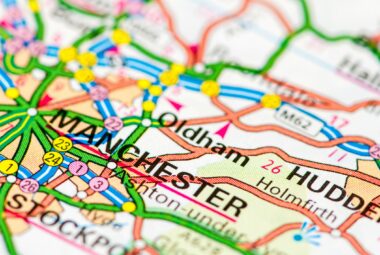UK IP law gets a makeover
In good news for advocates of IP rights, the UK Intellectual Property Act has received Royal Assent.
As reported in our spring newsletter, some of the most interesting changes relate to design law. These include the introduction of criminal sanctions against blatant copying of UK registered designs in the course of business, cheaper options for appeals from decisions of the UK IPO on registered designs, consistency with EU design law on matters such as ownership and prior user rights, and the provision of a UK IPO opinions service on designs, to supplement the existing service relating to patents.
Whilst the Act is now officially law, most provisions will not come into force until 1 October 2014, whilst others will take effect in 2015.
Criminal Sanctions: In certain circumstances the deliberate copying of a UK or EU registered design in the course of business will now be classed as a criminal offence; this brings the enforcement provisions in line with UK copyright and trademarks.
The assessment of whether an infringement has occurred is much more stringent for the criminal action as compared to the standard assessment under civil law. For example, it must be established that actual copying of the design has occurred after the design was registered, whereas when bringing a civil case for design infringement it is only necessary to show that there product in question is similar enough to the design as registered that it creates the same overall impression. In a criminal case it will also be necessary to show that the alleged infringer acted without the consent of the registered design holder, and knew or had reason to believe that the design was a registered design or that the registered design had been intentionally copied. When assessing a criminal case the court will therefore need to consider matters such as whether the registered design was the starting point for the alleged infringing design, which would simply not be an issue when reviewing a civil case.
It is, therefore, clear that any accidental use of a registered design will not be treated as a criminal offence. The occasions where there is a criminal case to answer as well as a civil one are likely to be relatively rare, but it is good that there will be the option for a strong and severe enforcement of registered design rights in instances where there has been a flagrant case of copying in the course of business.
In the most serious of cases, the criminal offence of copying a registered design will attract a prison sentence of up to 10 years and a fine.
Low cost appeals: When decisions are made by the UK IPO relating to designs, at the moment the right of appeal is to the UK courts. The new law will bring in the option of appealing to a person appointed by the Lord Chancellor instead of the court. Those who might be appointed to hear these appeals include legal professionals, such as IP barristers.
This reflects the system already in place for challenging trade mark decisions made by the UK IPO. It is a positive step in that an appeal to an appointed person is likely to be quicker, more informal and lower cost than an appeal to the UK courts.
Ownership: Historically, when a design was commissioned the ownership of the UK unregistered design rights, and of the right to register the design in the UK, by default went to the person or the company who commissioned the design. This will change, unless there is a contractual provision to the contrary, and so the new default position is that the designer will own the design rights. This brings UK law into line with the equivalent provisions under EU design law and also ensures that there is consistency with the ownership provisions under UK copyright law. Clearly it is desirable that the initial ownership of these closely-related rights should not end up with different parties.
Therefore companies utilising the services of design agencies in particular need to be aware that these IP rights in any commissioned works will stay with the designer, unless there is an assignment of the right or a contractual clause to the contrary.
Prior use in good faith: The new law brings in a right to carry on using a design even if it is later covered by a registered design owned by a third party. This will allow continued use of the design even after the registration, based on those preparations that were already made in good faith.
This change brings consistency with EU law, which contains an identical measure regarding a right of prior use.
It is important to note that this is a relatively limited exception to infringement. It only provides the ability to continue use of the design to the same extent it had been used prior to the design being registered. So, for example, if a company had in good faith applied a design to a t-shirt before the existence of a UK registration for this design, it could continue to do this, but it could not then apply the same design to a different item.
Private and non-commercial use: There is a new provision brought in to permit use of an unregistered design right in the context of private acts, experiments and teaching. The intention is that acts done privately and for no commercial purpose, and many acts done for teaching purposes, should not infringe UK unregistered design right. It is hoped that the exception for acts done for experimental purposes will encourage innovation, by permitting inspiration through use of existing designs.
Innocent infringement: A change is made to the financial liabilities that may potentially be faced by a person who innocently infringes a UK registered design. A person is an innocent infringer if he proves that, as at the date of the infringement, he was not aware that the infringed design was registered – and also that he had no reasonable ground for supposing it was registered. The current law doesn’t allow any financial remedies (damages or account of profits) to be sought from an innocent infringer of a UK registered design.
Under the revised law a proprietor of a UK registered design will be able to seek some or all of the profits that were made by an innocent infringer because of the infringing activity. This brings UK law closer to EU law, under which damages and/or an account of profits may be claimed from an innocent infringer of a Community design.
Opinions service: The Act brings in provisions for a non-binding opinions service for designs, similar to that which already exists for patents. The opinions service is provided by the UK IPO. The service will therefore be able to provide an opinion on matters such as whether a UK registered design is valid.
International design registration: The Hague Agreement provides for an international system for the registration of industrial designs. At the moment businesses in the UK have access to this system because the EU is signed up to the Hague Agreement. However, the UK is not a signatory in its own right, meaning that if UK protection is required the EU as a whole must be covered.
The Act includes provisions that will allow the UK to sign up to the Hague Agreement. This will be beneficial for those who would like to use the international system to gain design protection only covering specific relevant territories, rather than the entire EU. Therefore there should be cost saving benefits, which it is hoped may encourage more small and medium enterprises to use the system.


